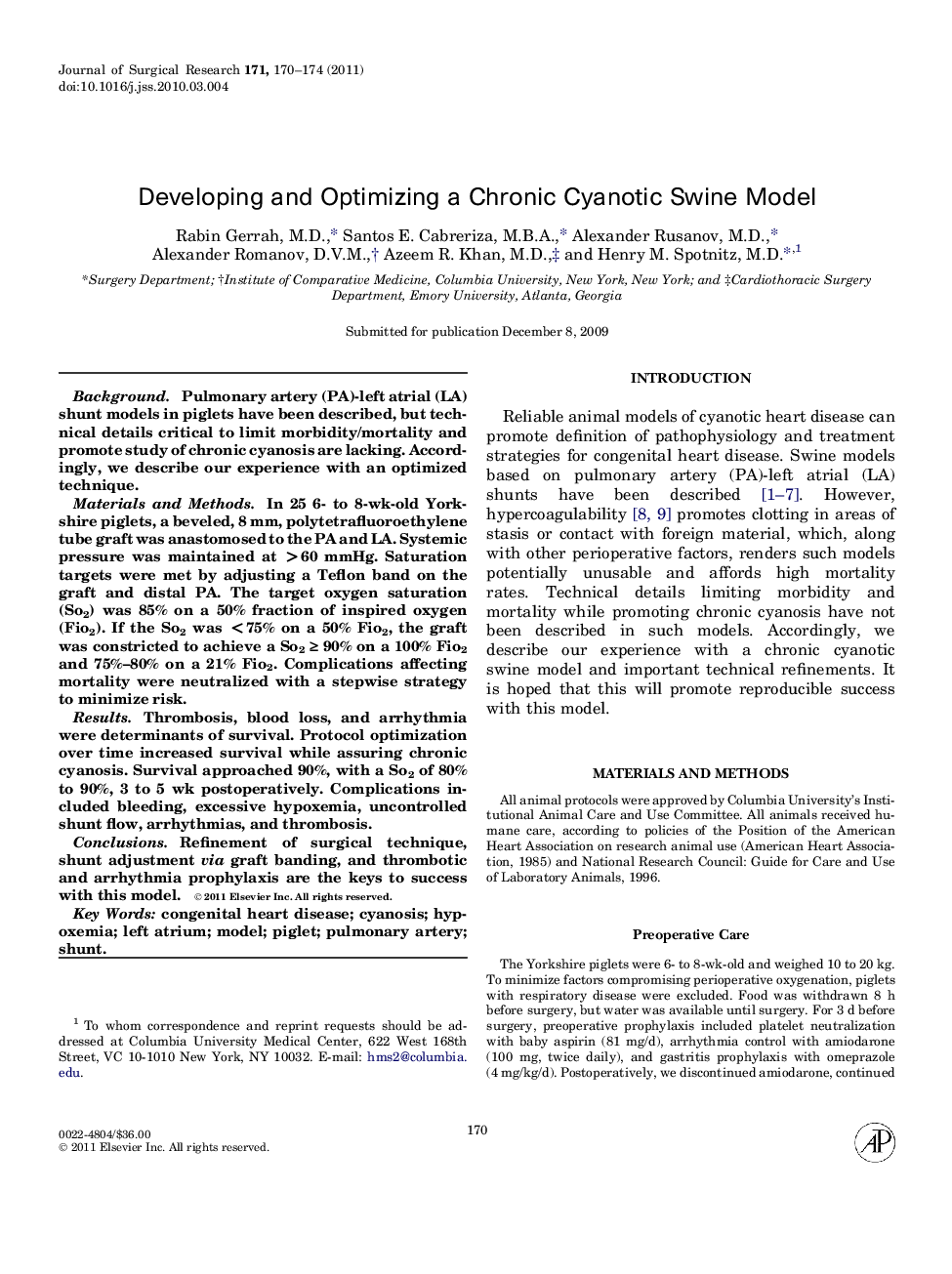| Article ID | Journal | Published Year | Pages | File Type |
|---|---|---|---|---|
| 4302045 | Journal of Surgical Research | 2011 | 5 Pages |
BackgroundPulmonary artery (PA)-left atrial (LA) shunt models in piglets have been described, but technical details critical to limit morbidity/mortality and promote study of chronic cyanosis are lacking. Accordingly, we describe our experience with an optimized technique.Materials and MethodsIn 25 6- to 8-wk-old Yorkshire piglets, a beveled, 8 mm, polytetrafluoroethylene tube graft was anastomosed to the PA and LA. Systemic pressure was maintained at >60 mmHg. Saturation targets were met by adjusting a Teflon band on the graft and distal PA. The target oxygen saturation (So2) was 85% on a 50% fraction of inspired oxygen (Fio2). If the So2 was <75% on a 50% Fio2, the graft was constricted to achieve a So2 ≥ 90% on a 100% Fio2 and 75%–80% on a 21% Fio2. Complications affecting mortality were neutralized with a stepwise strategy to minimize risk.ResultsThrombosis, blood loss, and arrhythmia were determinants of survival. Protocol optimization over time increased survival while assuring chronic cyanosis. Survival approached 90%, with a So2 of 80% to 90%, 3 to 5 wk postoperatively. Complications included bleeding, excessive hypoxemia, uncontrolled shunt flow, arrhythmias, and thrombosis.ConclusionsRefinement of surgical technique, shunt adjustment via graft banding, and thrombotic and arrhythmia prophylaxis are the keys to success with this model.
